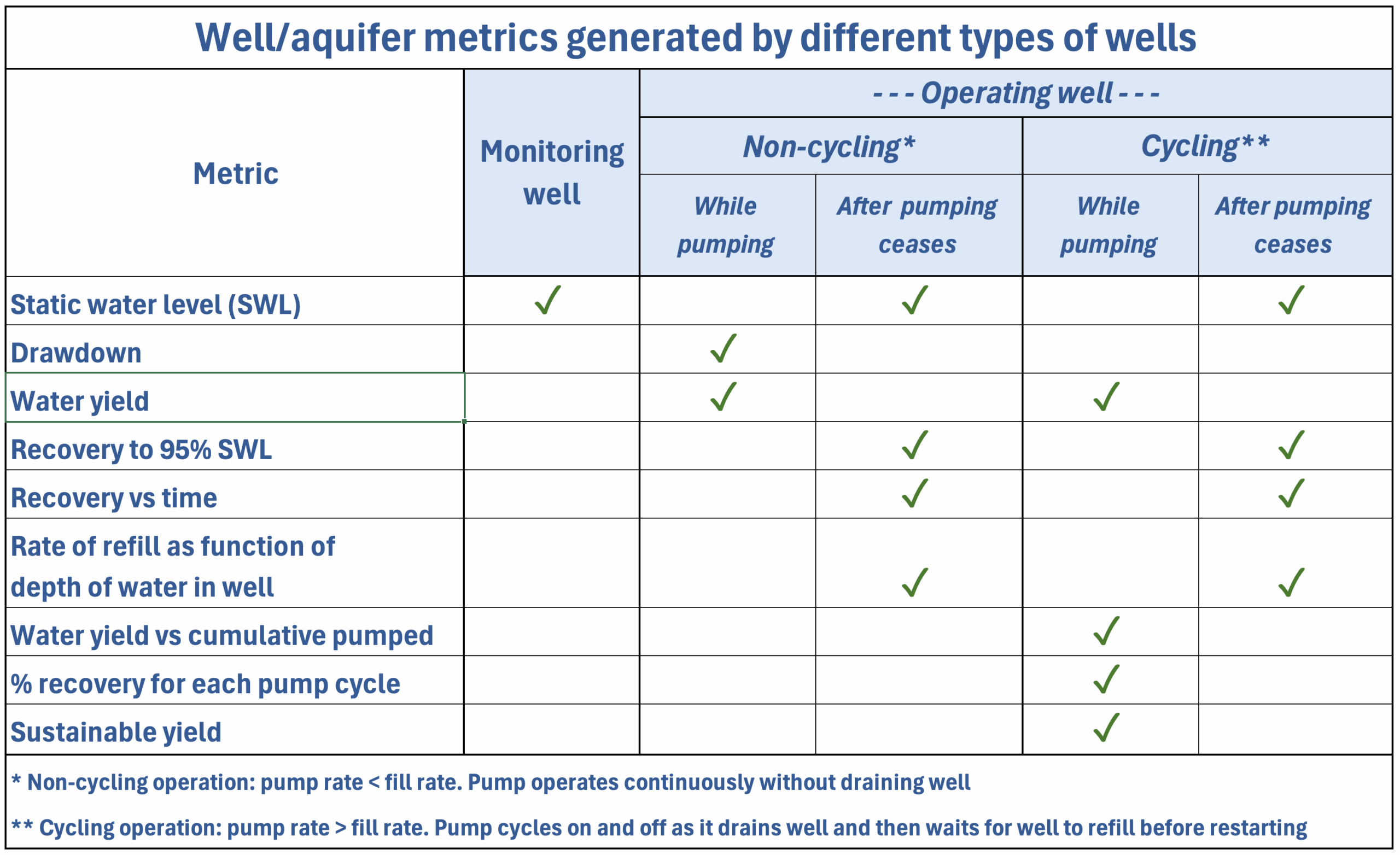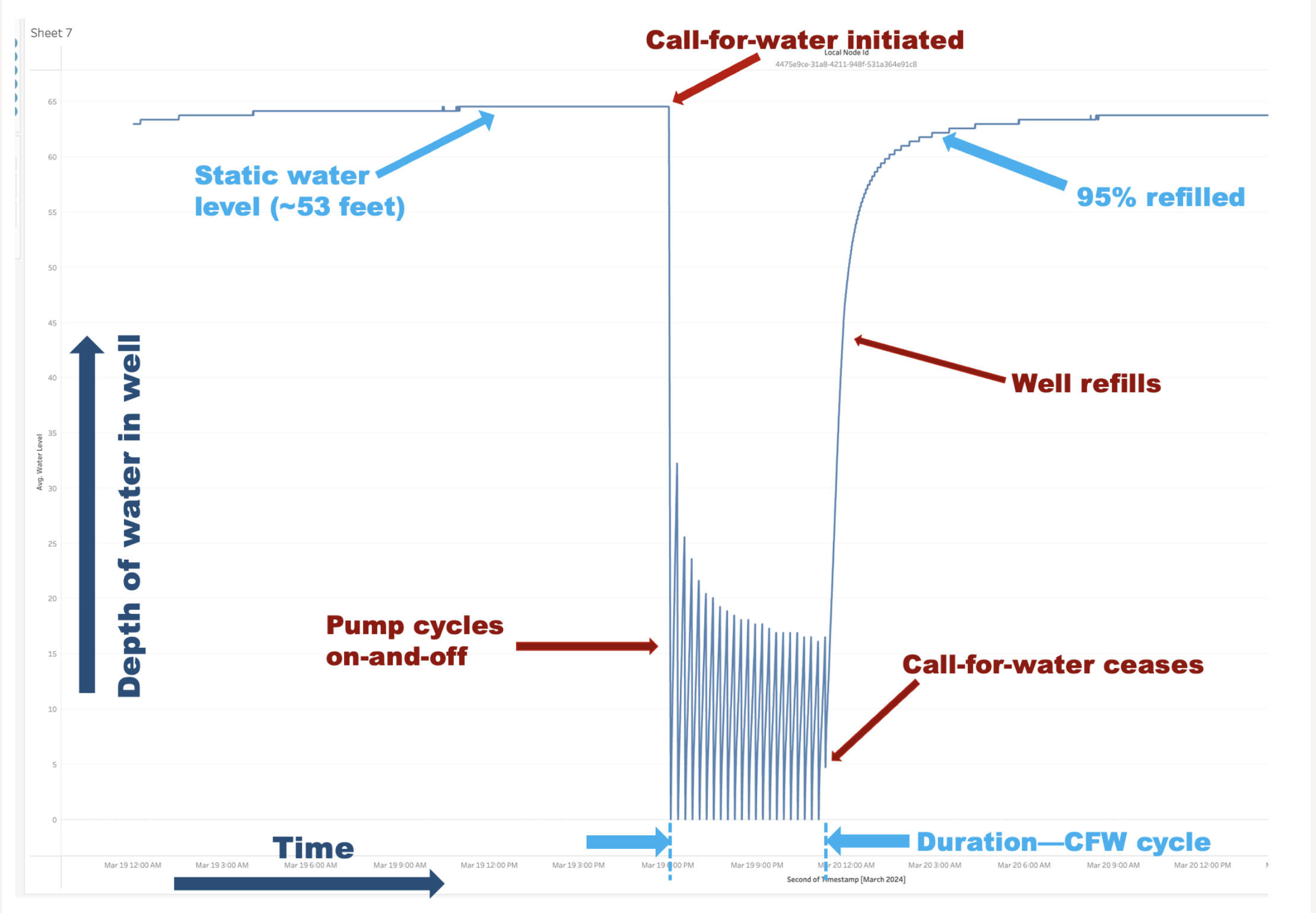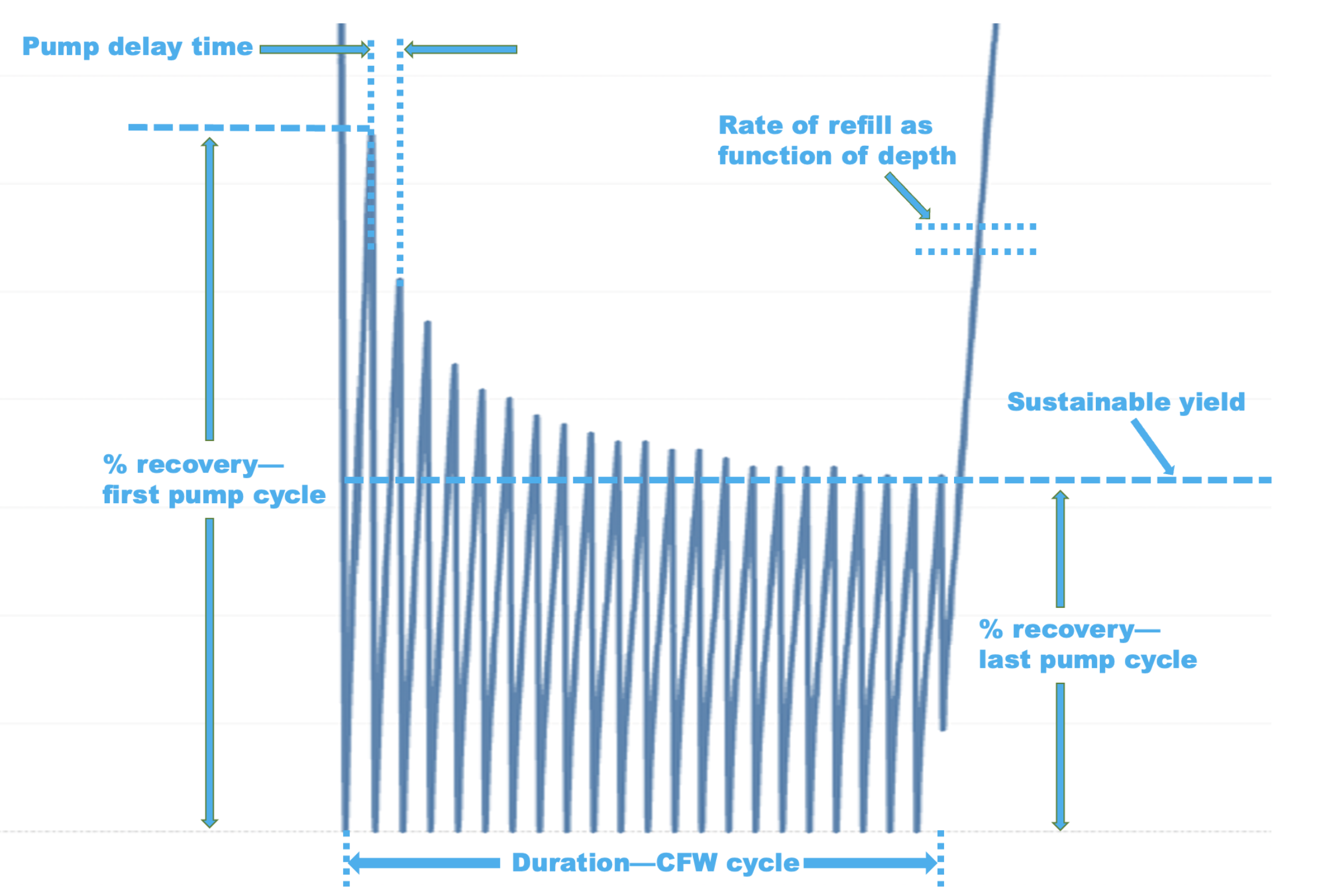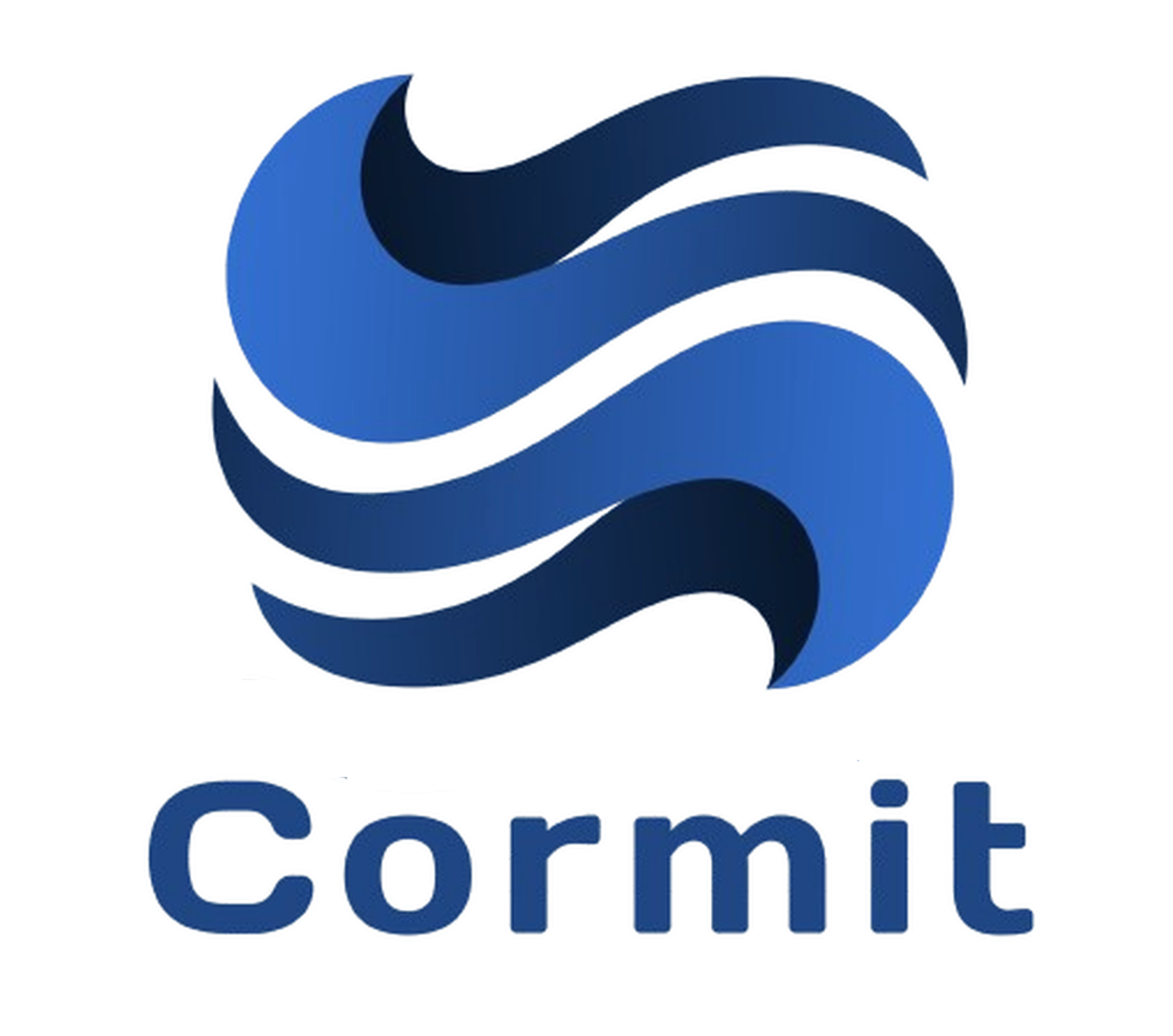Well/aquifer metrics — basics
Type of well determines the metrics it can generate
Monitoring well: A monitoring well can only report static water level on a remote basis.
Operating well—non-cycling: With a non-cycling operating well (pump rate < refill rate) the well depth equilibrates to a “drawdown” level. When the pump stops operating, well recovery can be measured as well as rate of refill as function of depth.
Operating well—cycling: : A cycling well (pump rate > refill rate) generates even more metrics: percent recovery for each pump cycle he duration of a CFW cycle and sustainable yield.
A cycling well generates a rich set of metrics that allow for a detailed understanding of the structure of the aquifer.

A well pump disturbs the aquifer. A disturbed aquifer is a rich source of data.
When a well pump is turned on, it is a shock to the aquifer; it induces a significant flow of water toward the well. Similarly, when the pump stops operating, the induced flow ceases and the aquifer reverts to its undisturbed state. (See animation to the right.) How the aquifer responds to these sharp local changes in condition reveals a lot about its structure. Monitoring how the depth of water in the well changes simultaneously with monitoring the water output from the well during these perturbations provides a data goldmine that allows us to understand the behavior of the aquifer.
Cormit’s cloud-based analytic engine is able to generate detailed well/aquifer metrics from such data.
A cycling well generates the richest metrics
The image on the right shows the depth of water in a well over the period when a well pump starts operating, cycles on-and-off until the tank or reservoir is filled, and then stops operating. Below we detail the metrics generated by Cormit for a cycling well.
Call-For-Water (CFW) cycle
A call-for-water is initiated when the water level in a tank or reservoir drops below a set threshold and the well pump is powered. Depending on whether the pump’s output is greater than or less than the rate at which the aquifer refills the well, one of the sequences below occurs:
- If the pump rate exceeds the rate at which the well is refilled with water, the pump cycles on and off until the CFW ceases as shown in the image.
- If the pump rate is less than the refill rate, the water level in the well settles down to the “drawdown” level and the pump operates continuously until CFW ceases. At the drawdown level, the rate at which water is pumped out of the well equals the rate at which the aquifer replenishes the well.
Well operation metrics
Pump delay time: How long the pump relay waits after the well drains before starting the well again.
Pump rate: The pumping capacity of the pump. This is unrelated to the aquifer and only measures the pumping capacity of the pump itself.
Duration—CFS cycle: The duration of a CFW cycle.
Cumulative water pumped: Total water pumped over the CFW cycle
Aquifer metrics
Static water level: For an unconstrained well, the static water level is, effectively, the top of the aquifer. Over time, as the aquifer is drained due to extraction and refilled by natural water migration, the static water level will move up and down.
% recovery—first/last pump cycle: This measures much the well refills on the first/last pump cycles during a CFW cycle, expressed as a percentage of the static water level.
Time to refill to 95%: measures how long it takes for the well to refill to 95% of the static level after a CFW ceases. This is a simple metric that captures the aquifer’s productivity.
Sustainable yield: Water yield that can be sustained if the CFW cycle is extended indefinitely. Sustainable yield is an average pumping rate including periods when the pump is operating as well as when it is temporarily off in-between pump cycles. It is calculated by curve fitting the % recovery for all pump cycles during the CFW cycle.
Rate of refill as function of depth: After CFW, the well refills. Initially, it refills rapidly and then the refill rate slows. Plotting the rate of refill as a function of the depth of water in the well provides information about the vertical profile of the aquifer as well as its transmissivity.


